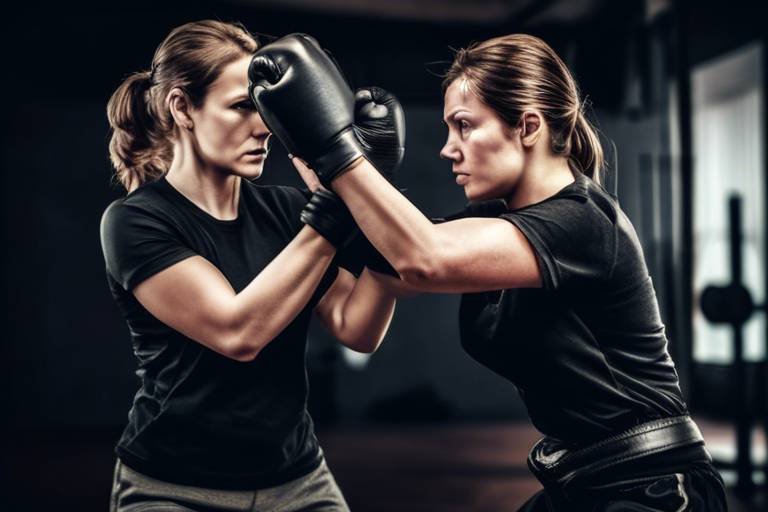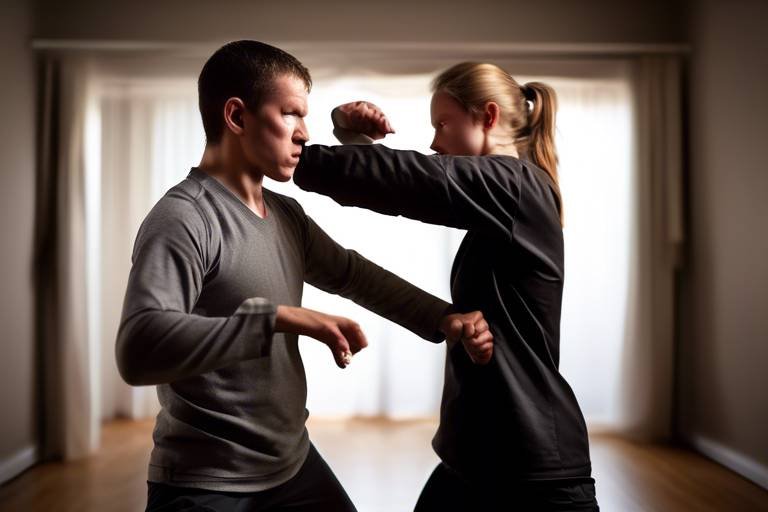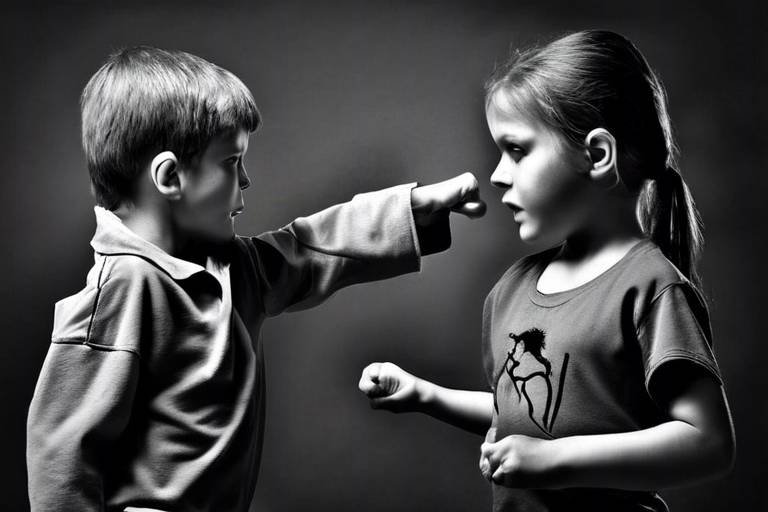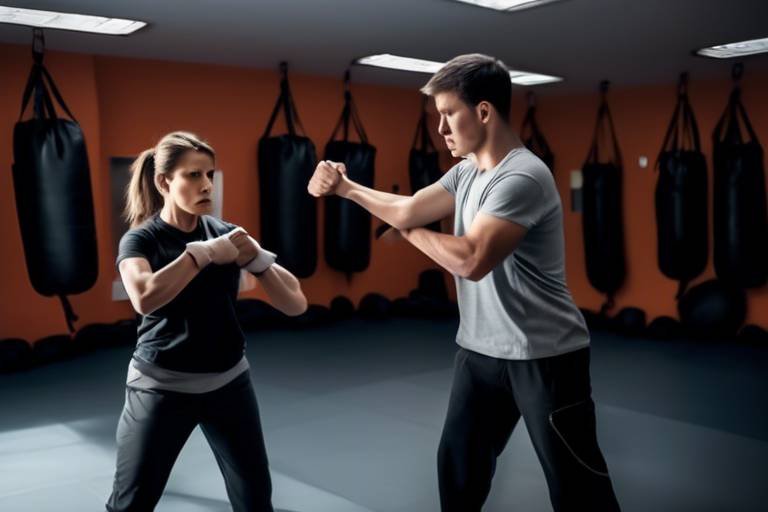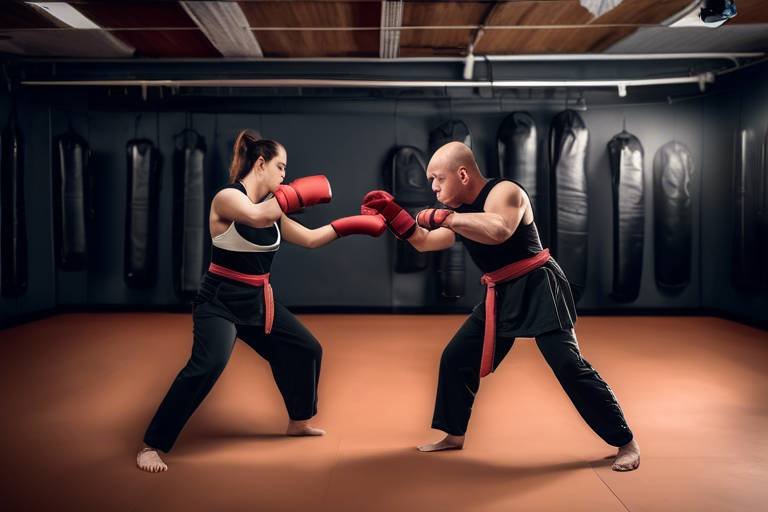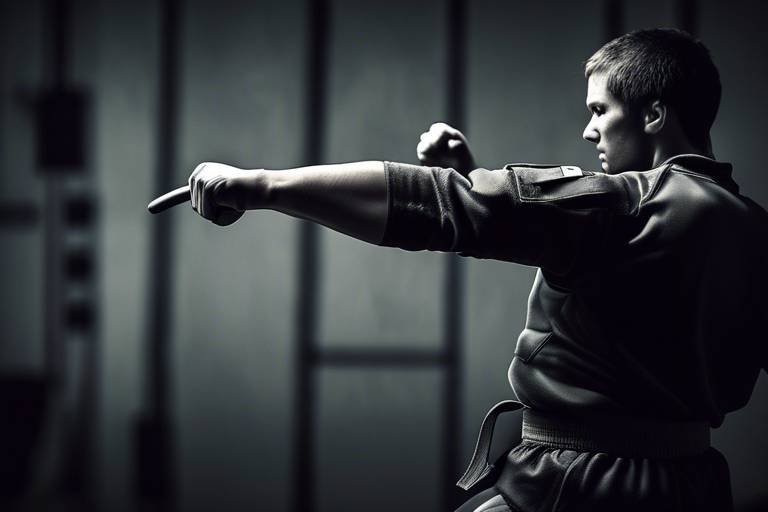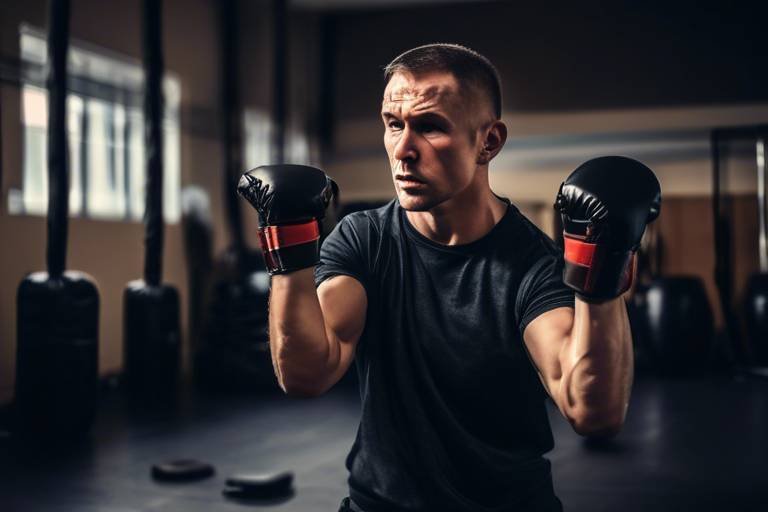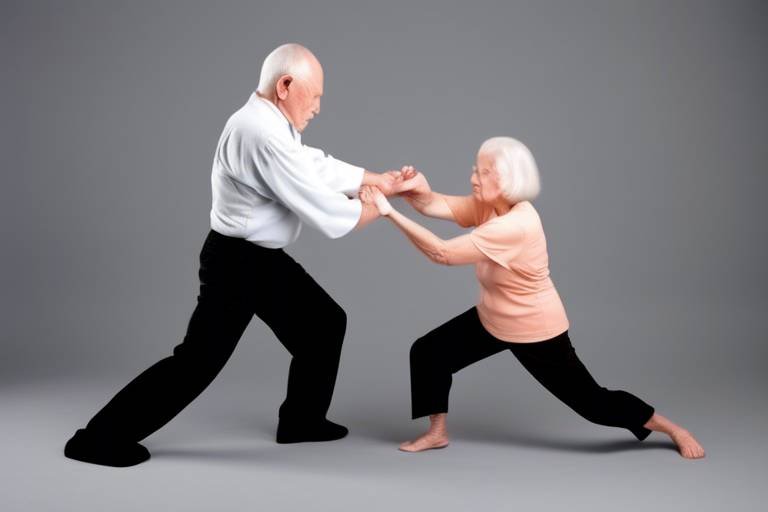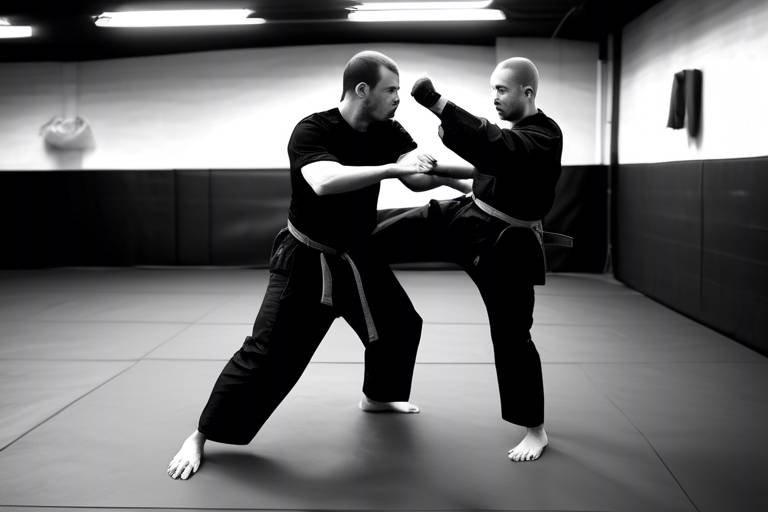Are You New to Self-Defense Training? Here's What to Expect
Embarking on a journey into the world of self-defense training can feel like stepping into the unknown. It’s a mix of excitement and apprehension, isn’t it? You might be wondering what to expect, how to prepare, and if you’ll really be able to defend yourself when it counts. The truth is, self-defense training is much more than just learning how to throw a punch or escape a hold; it’s about building a mindset, developing skills, and fostering confidence. Whether you're looking to enhance your personal safety or simply want to get fit while learning something new, self-defense training offers a plethora of benefits.
As a beginner, you’ll find that the first few classes will focus on the fundamentals. This includes understanding the importance of awareness and the ability to assess your surroundings. You’ll learn that sometimes, the best defense is simply avoiding a confrontation altogether. Imagine walking down the street and noticing a potentially dangerous situation before it escalates. That’s the power of awareness. You'll also be introduced to de-escalation techniques, which are essential tools in your self-defense arsenal. These skills teach you how to diffuse a situation verbally before it turns physical, which is often the safest option.
When choosing a training program, it’s vital to consider what you hope to achieve. Are you interested in martial arts, or do you want something more practical like Krav Maga? Each program has its unique focus and philosophy, and finding one that aligns with your goals will enhance your experience. Do your research, ask questions, and don’t hesitate to visit a few classes before making a commitment. Remember, this is about you and your personal journey toward empowerment.
Another crucial aspect is the instructor. A great instructor does more than just teach techniques; they inspire and create a supportive environment where you can learn without fear of judgment. Look for someone who has experience, a positive teaching style, and the ability to adapt to the needs of their students. After all, the right instructor can make all the difference in your training experience.
As you dive deeper into your training, you'll discover the importance of mental preparedness. Self-defense is as much about mindset as it is about physical ability. You’ll learn to stay calm under pressure and to recognize your own strengths. Building confidence is key, and there are various strategies to help you, such as visualization techniques and positive affirmations. Just imagine walking into a room full of people, and instead of feeling nervous, you radiate confidence because you know you have the skills to protect yourself.
Regular practice is essential to reinforce what you learn. It’s like learning to ride a bike; the more you practice, the more natural it becomes. Setting a training schedule that fits your lifestyle will ensure you stay on track. And don’t underestimate the power of having a training partner. Not only does it make the sessions more enjoyable, but it also allows you to practice techniques in a more realistic setting, simulating potential real-life scenarios.
Lastly, safety should always be a priority during training. Using protective gear, such as gloves and mouthguards, is essential to minimize the risk of injury. Equally important is listening to your body. If something doesn’t feel right, it’s crucial to take a step back and assess your limits. Remember, the goal is to learn and grow, not to push yourself to the point of injury.
- What should I wear to self-defense classes? Comfortable athletic wear and closed-toe shoes are recommended.
- How long does it take to become proficient in self-defense? Proficiency varies by individual; regular practice and commitment are key.
- Is self-defense training suitable for all ages? Yes, self-defense training can be adapted for all ages and fitness levels.
- Do I need to be physically fit to start? No, self-defense training is designed to improve your fitness as you learn.

Understanding Self-Defense Basics
When it comes to self-defense, the fundamental principles are your best friends. Imagine you're walking down the street, and suddenly, you sense something off. This is where awareness comes into play. It's not just about knowing how to throw a punch or escape a hold; it's about being aware of your surroundings and recognizing potential threats before they escalate. Think of it as having a sixth sense that keeps you one step ahead. By honing your awareness, you can often avoid confrontations altogether, which is the first rule of self-defense.
Next up is the importance of avoidance. Not every situation requires you to engage physically. Sometimes, the best self-defense move is simply walking away or de-escalating a potential conflict. This is where your skills in communication and understanding body language can shine. Imagine being in a heated argument; knowing when to back off can save you from a world of trouble. This is why self-defense training emphasizes not just physical techniques, but also mental strategies.
Now, let’s talk about de-escalation techniques. These are the verbal and non-verbal strategies you can use to defuse a tense situation. Picture this: you’re confronted by someone who seems aggressive. Instead of matching their energy, you can use calm, assertive communication to redirect the situation. Techniques like maintaining eye contact, using a steady voice, and employing open body language can help you regain control. Remember, the goal is to avoid physical confrontation whenever possible. Here are some key de-escalation tactics:
- Stay calm and composed.
- Use non-threatening body language.
- Listen actively to the other person.
- Validate their feelings without agreeing with their stance.
- Offer solutions that encourage a peaceful resolution.
In summary, understanding the basics of self-defense goes beyond just learning how to fight. It’s about cultivating a mindset that prioritizes safety, awareness, and conflict resolution. By focusing on these principles, you not only prepare yourself physically but also mentally for any situation that may arise. Whether you’re in a self-defense class or just practicing on your own, remember that the best fight is the one you never have to engage in. So, embrace these fundamentals, and you’ll find yourself more prepared and confident in your self-defense journey.
Q1: What is the most important aspect of self-defense training?
A1: The most important aspect is awareness. Being aware of your surroundings can help you avoid dangerous situations before they escalate.
Q2: Can I learn self-defense techniques without physical training?
A2: Yes, many self-defense principles, such as de-escalation and avoidance, can be learned through verbal and mental strategies without physical training.
Q3: How can I practice awareness in my daily life?
A3: You can practice awareness by paying attention to your surroundings, avoiding distractions like your phone, and regularly assessing your environment.
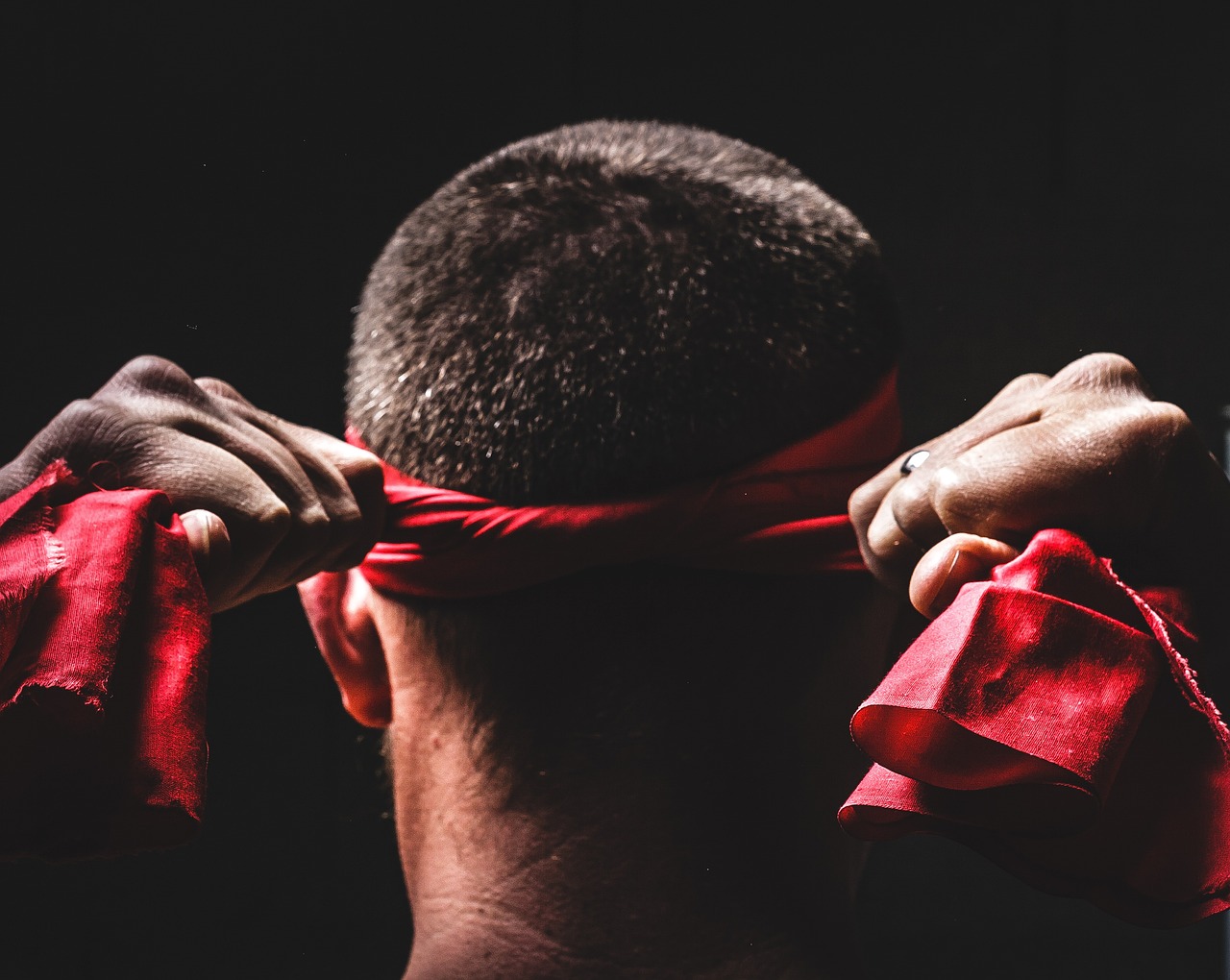
Choosing the Right Training Program
When it comes to self-defense training, choosing the right program can feel like navigating a maze. With so many options available, it’s essential to find a program that not only fits your personal goals but also resonates with your learning style. Think of it as picking the right gym for your fitness journey; you want a place that motivates you and meets your needs. So, what should you consider when selecting a self-defense program? Let's break it down.
First and foremost, understand the different types of self-defense training available. Each program has its unique focus, and knowing what appeals to you can make all the difference. For instance, if you're interested in martial arts, you might explore programs like Brazilian Jiu-Jitsu or Muay Thai, which emphasize grappling and striking techniques, respectively. On the other hand, if you're looking for something more practical for real-world situations, Krav Maga might be your best bet, as it focuses on instinctive movements and real-life scenarios.
Another vital factor to consider is the training environment. You want a place that fosters a sense of community and support. It's crucial to feel comfortable and safe while learning. Many programs offer trial classes, which can be a great way to gauge the atmosphere. Are the instructors approachable? Do the students seem supportive of each other? These elements can significantly enhance your learning experience.
Moreover, don't overlook the importance of instructor quality. An experienced instructor can make a world of difference in your training. Look for someone who not only has the necessary qualifications but also possesses a teaching style that resonates with you. You want someone who can break down complex techniques into digestible chunks, making it easier for you to grasp and apply what you've learned.
Additionally, consider the class size and structure. Smaller classes often allow for more personalized attention, which can be particularly beneficial for beginners. You’ll have more opportunities to ask questions and receive feedback, enhancing your learning curve. In contrast, larger classes might be more energetic, but they can sometimes lead to less individual attention, making it harder to master techniques.
Ultimately, the right training program should align with your personal goals. Are you training for fitness, self-confidence, or practical self-defense? Understanding your objectives will help you choose a program that not only meets your expectations but also keeps you engaged and motivated. As you explore different options, don't hesitate to ask questions and seek advice from current students or instructors. After all, this journey is about empowering yourself and ensuring you feel equipped to handle any situation that arises.
- What should I wear to my first self-defense class? Comfortable athletic wear that allows for movement is ideal. Don't forget supportive shoes!
- How long does it take to become proficient in self-defense? Proficiency varies by individual, but consistent practice over months will lead to improvement.
- Is self-defense training safe? Yes, when conducted under the supervision of a qualified instructor with appropriate safety measures in place.
- Can self-defense training help with fitness? Absolutely! Many self-defense classes provide a full-body workout.

Evaluating Instructors
When embarking on your self-defense journey, one of the most critical decisions you’ll make is choosing the right instructor. After all, your instructor will not only teach you vital skills but also shape your overall experience and confidence in self-defense scenarios. So, how do you go about evaluating instructors? It’s essential to consider several key factors that can significantly impact your training.
First and foremost, experience is paramount. An instructor with a wealth of experience, particularly in real-world self-defense situations, will bring invaluable insights to the training environment. They can share practical tips and tricks that you won’t find in textbooks. Look for instructors who have a background in various disciplines, such as martial arts, law enforcement, or security. This diverse experience can enrich your learning and provide a more comprehensive understanding of self-defense.
Next, take a closer look at the teaching style of the instructor. Each instructor has a unique way of conveying information, and finding one whose style resonates with you can make a world of difference. Some instructors may focus on a more hands-on approach, allowing you to practice techniques extensively, while others might emphasize theory and strategy. Don’t hesitate to attend a trial class or observe a session to gauge whether their teaching methods align with your learning preferences.
Moreover, the ability to create a safe learning environment is crucial. A good instructor should foster an atmosphere where students feel comfortable asking questions, making mistakes, and learning at their own pace. During your evaluation, pay attention to how the instructor interacts with students. Are they encouraging? Do they provide constructive feedback? A supportive instructor can make all the difference in your self-defense training journey, helping you to build confidence and skills in a positive setting.
Lastly, it's essential to check the credentials of your potential instructor. Look for certifications from recognized organizations or governing bodies in self-defense or martial arts. This not only ensures that the instructor has undergone rigorous training themselves but also that they adhere to a certain standard of teaching. You might find it helpful to ask about their qualifications during your initial conversation or consultation.
In summary, evaluating instructors is a vital step in your self-defense training. By considering their experience, teaching style, ability to create a safe environment, and credentials, you can make an informed decision that aligns with your goals. Remember, the right instructor can inspire you to push your limits and become more adept at self-defense, ultimately empowering you to face any challenges that may come your way.
- How do I know if a self-defense class is right for me? It's essential to assess your personal goals and comfort level. Attend a trial class to see if the environment and teaching style suit your needs.
- What should I wear to self-defense classes? Comfortable athletic wear is recommended, along with closed-toe shoes. Some classes may require specific gear, so check in advance.
- Is self-defense training safe? Yes, when conducted under the guidance of a qualified instructor and with appropriate protective gear, self-defense training is generally safe.
- How long does it take to become proficient in self-defense? Proficiency varies based on individual commitment and practice. Regular training can lead to noticeable improvements within a few months.

Instructor Credentials
When it comes to self-defense training, the credentials of your instructor can make a world of difference. You wouldn't trust just anyone to teach you how to protect yourself, right? So, what should you look for? First and foremost, consider the instructor's experience. An instructor with a solid background in martial arts or self-defense will not only have the technical skills but also the wisdom to teach effectively. They should have years of training under their belt, ideally in various disciplines, which equips them with a well-rounded perspective on self-defense techniques.
Next, think about their teaching style. A great instructor knows that teaching is not just about demonstrating moves but also about engaging students. They should be able to break down complex techniques into manageable steps and provide constructive feedback. This can make learning more enjoyable and effective. You might want to attend a trial class or two to see if their style resonates with you. After all, it’s much easier to learn in an environment where you feel comfortable and motivated.
Furthermore, it's essential to ensure that your instructor creates a safe learning environment. This means they should emphasize the importance of safety protocols during training. They should encourage students to communicate openly about their comfort levels and any injuries they might have. A supportive instructor will foster a culture of respect and understanding, making it easier for everyone to learn at their own pace.
Lastly, don't forget to check their qualifications and certifications. Instructors should have recognized certifications from reputable organizations. This not only validates their skills but also shows their commitment to maintaining high standards in teaching self-defense. You can ask them about their training history and any additional certifications they may hold, such as first aid or specialized self-defense courses.
In summary, when evaluating potential instructors, keep an eye out for:
- Experience: Years of training and teaching in self-defense.
- Teaching Style: Ability to engage and communicate effectively.
- Safe Learning Environment: Emphasis on safety and student comfort.
- Qualifications: Recognized certifications and ongoing education.
By taking the time to assess these aspects, you'll be better equipped to find an instructor who not only meets your training needs but also inspires confidence in your self-defense journey.
Q: How do I know if my instructor is qualified?
A: Look for instructors with certifications from recognized self-defense organizations, and don't hesitate to ask about their experience and training background.
Q: What if I feel uncomfortable during training?
A: It's essential to communicate any discomfort to your instructor. A good instructor will take your concerns seriously and adjust the training environment accordingly.
Q: Is it important to train with a partner?
A: Yes! Training with a partner can enhance your learning experience by providing real-life scenarios and feedback on your techniques.
Q: How often should I train to see improvement?
A: Consistency is key. Aim for at least 2-3 training sessions per week to build muscle memory and improve your skills effectively.

Class Size and Structure
When diving into self-defense training, one of the most crucial factors to consider is the . The environment in which you learn can significantly impact your overall experience and effectiveness in mastering self-defense techniques. Smaller class sizes often provide a more intimate setting, allowing for personalized attention from instructors. This means that you can receive tailored feedback on your form, technique, and progress, which is especially beneficial for beginners who might feel overwhelmed in larger groups.
In a smaller class, you are more likely to engage in hands-on practice with your instructor and fellow students, giving you the opportunity to refine your skills in real-time. Imagine trying to learn to swim in a crowded pool versus a private lesson; the latter allows for focused instruction and immediate corrections, which can be a game-changer in your learning journey. Additionally, smaller groups foster a sense of community and support, making it easier for you to ask questions and share experiences.
On the other hand, larger classes can sometimes feel impersonal, and you may find it challenging to get the attention you need. Instructors may struggle to monitor every student’s progress, which could result in missed opportunities for improvement. However, larger classes can also provide a diverse range of experiences, allowing you to train with different partners and encounter various skill levels. This can be beneficial in simulating real-world scenarios where you might face a variety of opponents.
When evaluating a self-defense program, pay attention to the following aspects regarding class size and structure:
- Instructor-to-Student Ratio: A lower ratio is generally better for personalized instruction.
- Class Format: Look for classes that incorporate both theory and practical application.
- Frequency of Classes: Regular sessions encourage consistent practice and skill retention.
Ultimately, the ideal class size and structure will depend on your personal learning style and goals. Some students thrive in a bustling environment, while others may feel more comfortable in a quieter, focused setting. Don’t hesitate to try out a few classes before committing to a program. This way, you can assess whether the class size and structure align with your needs and expectations.
Q: What is the ideal class size for self-defense training?
A: While it varies by personal preference, many recommend classes with 5-15 students for optimal learning.
Q: Can I switch classes if I find the current one too large?
A: Absolutely! Most programs allow students to try different classes to find the best fit.
Q: How often should I attend classes to see progress?
A: Attending at least 1-2 classes per week is ideal for consistent improvement.

Assessing Your Personal Goals
When it comes to self-defense training, the journey is as unique as you are. Before you dive headfirst into classes, it’s crucial to take a moment to reflect on your personal goals. Ask yourself, “What do I want to achieve through this training?” This simple question can help you tailor your experience and make the most out of your time on the mat.
Perhaps your primary objective is to build confidence. Many people find that learning self-defense techniques not only equips them with practical skills but also boosts their self-esteem. Imagine walking down the street with your head held high, knowing you have the tools to protect yourself if needed. That sense of empowerment can be life-changing!
Alternatively, you might be looking to improve your fitness levels. Self-defense training is a fantastic way to get in shape while learning valuable skills. Think of it as a workout that comes with a bonus: the ability to defend yourself. As you practice striking techniques and defensive maneuvers, you’ll notice improvements in your strength, agility, and overall health.
Another important aspect to consider is whether you want to learn practical techniques for real-life situations. Many self-defense programs focus on scenarios you might actually encounter. This practical approach can help you feel more prepared and less anxious in potential confrontations. You might find yourself thinking, “If I can handle this in training, I can handle it in real life!”
To help clarify your goals, it might be beneficial to jot them down. Here’s a simple way to categorize your objectives:
- Confidence Building: Enhancing your self-esteem and assertiveness.
- Fitness Improvement: Getting in shape while learning self-defense.
- Practical Skills: Learning techniques that can be applied in real-life situations.
- Social Interaction: Meeting new people and building a community.
Once you’ve identified your goals, communicate them with your instructor. A good instructor will help you align your training with your objectives, ensuring that you get the most out of each session. Remember, self-defense training is not just about physical skills; it’s also about mental preparation and understanding your own limits and strengths.
In conclusion, assessing your personal goals is a vital step in your self-defense training journey. Whether you're looking to boost your confidence, improve your fitness, or learn practical techniques, having a clear understanding of what you want will enhance your experience and keep you motivated. So take a moment to think about your goals, and get ready to embark on an empowering adventure!
Q: How long does it take to learn self-defense?
A: The time it takes to learn self-defense varies based on your goals and the frequency of your training. Many people start feeling more confident after just a few weeks of consistent practice.
Q: Do I need to be in shape to start self-defense training?
A: Not at all! Self-defense training can accommodate all fitness levels. The focus is on learning techniques, and you’ll improve your fitness as you progress.
Q: Can self-defense training help with anxiety or fear?
A: Yes! Many individuals find that learning self-defense techniques helps reduce anxiety and fear by providing them with the skills and confidence to handle potential confrontations.
Q: What should I wear to a self-defense class?
A: Comfortable workout clothing is ideal. You’ll want to wear something that allows for movement, such as athletic pants and a t-shirt. Don't forget to bring water to stay hydrated!
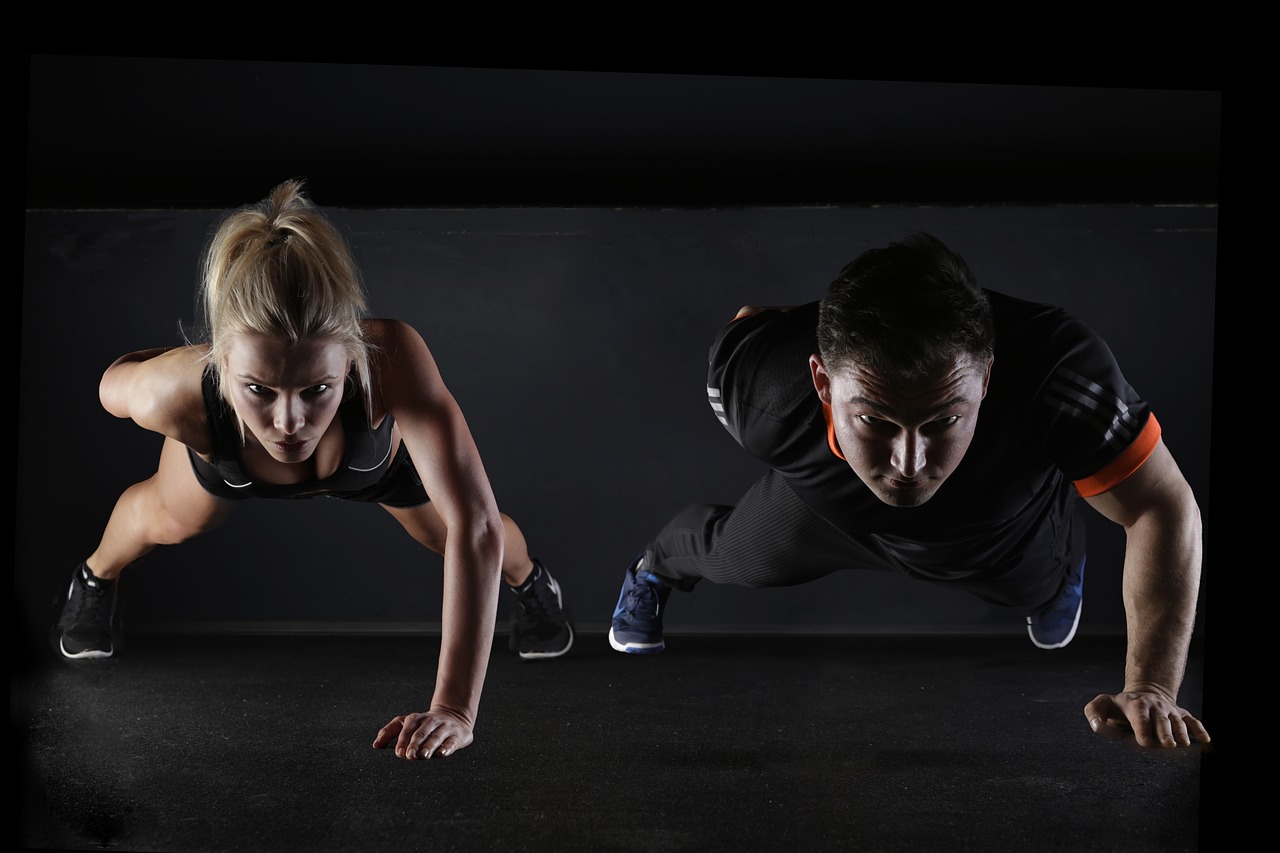
Essential Techniques to Learn
When diving into the world of self-defense, it’s crucial to equip yourself with essential techniques that form the backbone of your training. Think of these techniques as the building blocks that will empower you to protect yourself effectively. Whether you’re a complete novice or someone looking to brush up on your skills, mastering these core techniques will give you a solid foundation to build upon.
One of the first areas to focus on is striking techniques. These are not just about throwing punches; they encompass a range of movements that can help you fend off an attacker. Effective striking involves understanding how to use your body mechanics to deliver powerful punches, kicks, and even elbow strikes. For instance, a well-placed kick can create enough distance between you and a potential threat, giving you the chance to escape. In your training, you’ll practice various strikes to understand their application in real-life scenarios.
Next up are defensive maneuvers. It’s not just about attacking; being able to defend yourself is equally important. This includes techniques such as blocking and evading attacks. Imagine you’re in a situation where someone lunges at you; knowing how to effectively block that attack can make all the difference. Defensive maneuvers teach you to anticipate an attacker’s moves and react accordingly, which is vital for your safety. You’ll also learn how to create openings for counterattacks after successfully defending against an attack.
Moreover, practicing escapes is another essential technique. In many situations, the best response is to get away from the threat as quickly as possible. You’ll learn various escape techniques that can help you break free from holds or grips. Each escape method is designed for specific scenarios, so understanding the context in which to use them is key. Regular practice of these techniques will help you react instinctively when the need arises.
To give you a clearer picture, here’s a brief overview of the essential techniques you should focus on:
| Technique | Description |
|---|---|
| Striking | Includes punches, kicks, and elbow strikes for offense. |
| Defensive Maneuvers | Techniques to block and evade attacks. |
| Escapes | Methods to break free from holds or grips. |
As you embark on your self-defense journey, remember that practice is key. The more you train these techniques, the more natural they will become. It’s not just about memorizing movements; it’s about developing muscle memory that will kick in when you need it the most. So, find a training partner, hit the mats, and start honing these essential skills. You’ll find that each technique not only builds your physical capabilities but also boosts your confidence, preparing you for any situation that may come your way.
Q: How long does it take to learn self-defense techniques?
A: The time it takes to learn self-defense techniques varies based on individual commitment and practice frequency. Generally, consistent training over several weeks or months will help you grasp the basics.
Q: Do I need to be physically fit to start self-defense training?
A: Not at all! Self-defense training is designed for people of all fitness levels. As you train, you will naturally improve your fitness while learning valuable techniques.
Q: Can self-defense training be beneficial for women?
A: Absolutely! Self-defense training is particularly empowering for women, providing them with the skills and confidence to protect themselves in various situations.

Striking Techniques
When it comes to self-defense, are your first line of defense. These techniques are not just about throwing punches or kicks; they encompass a wide range of movements designed to incapacitate an attacker quickly and efficiently. Imagine being in a situation where you need to protect yourself, and having the ability to deliver a powerful strike can make all the difference. Striking techniques include various forms of attack, such as punches, kicks, and elbows, each serving a unique purpose in a self-defense scenario.
One of the most fundamental striking techniques is the straight punch. This is often the first technique taught in self-defense classes because it’s simple yet effective. When executed properly, a straight punch can deliver significant force to an opponent, ideally targeting vulnerable areas like the nose or jaw. To master this technique, focus on your stance, ensuring that your feet are shoulder-width apart, and your body is balanced. As you throw the punch, remember to rotate your hips and shoulders for maximum power.
Next up is the kick. Kicks can be particularly effective because they allow you to maintain distance from an attacker while still delivering a strong blow. A well-placed kick can target the knees, shins, or even the groin, which can incapacitate an assailant and give you the opportunity to escape. There are several types of kicks to learn, including the front kick, side kick, and roundhouse kick. Each kick has its own mechanics and ideal target areas, so take the time to practice each one to find out which suits you best.
Another powerful striking technique is the use of elbows. In close-range situations, elbows can be devastating. They are short, powerful strikes that can be delivered quickly and with less risk of missing your target. Practicing elbow strikes can be particularly helpful in crowded situations where you may not have room to throw a full punch or kick. Focus on your form, and aim for sensitive areas like the chin or temple, where the impact can be most effective.
It's essential to practice these striking techniques regularly to develop muscle memory. The more you practice, the more instinctive these movements will become, allowing you to react quickly if you ever find yourself in a dangerous situation. Consider incorporating a training partner into your practice sessions to simulate real-life scenarios. This not only helps with timing and distance but also builds your confidence in using these techniques effectively.
As you progress in your self-defense training, you might also want to explore combinations of strikes. For instance, a common combination is to throw a punch followed by a kick. This fluidity can catch an attacker off guard and provide you with the upper hand. Remember, the goal of self-defense is not just to fight back but to create an opportunity to escape safely.
In conclusion, mastering striking techniques is a vital component of self-defense training. By focusing on punches, kicks, and elbows, you can build a solid foundation that will empower you to protect yourself effectively. Always remember to practice with control and awareness, ensuring that you’re building skills that can be used in real-life situations.
- What are the best striking techniques for beginners? Beginners should start with straight punches, front kicks, and elbow strikes as they are fundamental and easy to learn.
- How often should I practice striking techniques? Regular practice is key; aim for at least two to three times a week to build muscle memory and confidence.
- Can I practice striking techniques alone? While solo practice is beneficial, working with a partner can enhance your training by providing realistic scenarios.
- Are striking techniques effective in real-life situations? Yes, when executed properly, striking techniques can be highly effective in defending against an attacker and creating an opportunity to escape.

Defensive Maneuvers
When it comes to self-defense, mastering is just as crucial as learning how to strike. These techniques are your first line of defense, allowing you to evade or block attacks before they escalate into something more dangerous. Just think of them as the shield that protects your body while you’re strategizing your next move. In this section, we'll dive into the essential defensive maneuvers you should focus on during your training.
One of the most fundamental defensive maneuvers is the block. This technique involves using your arms or hands to intercept an incoming strike. A well-executed block can minimize the impact of an attack and give you the opportunity to counter. For instance, when someone throws a punch, a simple forearm block can deflect the blow away from your face and create an opening for your own counterattack. Remember, the key to effective blocking is timing and positioning – you need to be aware of your opponent's movements to react accordingly.
Another critical maneuver is evading, which is all about movement. Instead of standing your ground and absorbing a hit, evading allows you to create distance between yourself and the attacker. This can be achieved through simple footwork techniques, such as stepping to the side or ducking under a punch. Think of it as dancing – you need to be light on your feet and ready to move in any direction. By practicing these movements, you can develop the reflexes necessary to dodge attacks effectively.
In addition to blocking and evading, parrying is another technique worth mastering. Parrying involves using your hands to redirect an attack away from your body. It requires a bit more finesse than a block, as you’re not just stopping the strike but guiding it off course. For example, if an opponent aims a punch at your head, a well-timed parry can deflect their arm, causing them to lose balance and opening them up for a counterattack. This technique not only protects you but also allows you to take control of the situation.
It's also essential to understand the importance of maintaining a strong stance during defensive maneuvers. A solid base will provide you with the stability needed to execute these techniques effectively. Your feet should be shoulder-width apart, knees slightly bent, and weight distributed evenly. This stance will help you move quickly and respond to attacks without losing your balance. Think of it as your foundation – without it, your defensive strategies may crumble.
To help you visualize these concepts, here’s a quick comparison of the three defensive maneuvers:
| Technique | Description | Key Points |
|---|---|---|
| Block | Interception of an attack using arms or hands. | Timing and positioning are crucial. |
| Evade | Movement to avoid an attack. | Light footwork and awareness of surroundings. |
| Parry | Redirecting an attack away from your body. | Requires finesse and timing. |
Incorporating these defensive maneuvers into your self-defense training will not only enhance your ability to protect yourself but also boost your confidence. Remember, the goal is to stay calm and composed, even when faced with a potential threat. With practice, you'll find that these techniques become second nature, allowing you to respond effectively in real-life situations.
- What should I wear to self-defense classes? It's best to wear comfortable clothing that allows for movement, such as athletic wear. Footwear should provide good support.
- How long does it take to learn self-defense? The time varies depending on your commitment and the complexity of the techniques. However, consistent practice will lead to noticeable improvements.
- Is self-defense training suitable for everyone? Yes! Self-defense training can benefit individuals of all ages and fitness levels. It's designed to empower you and improve your confidence.
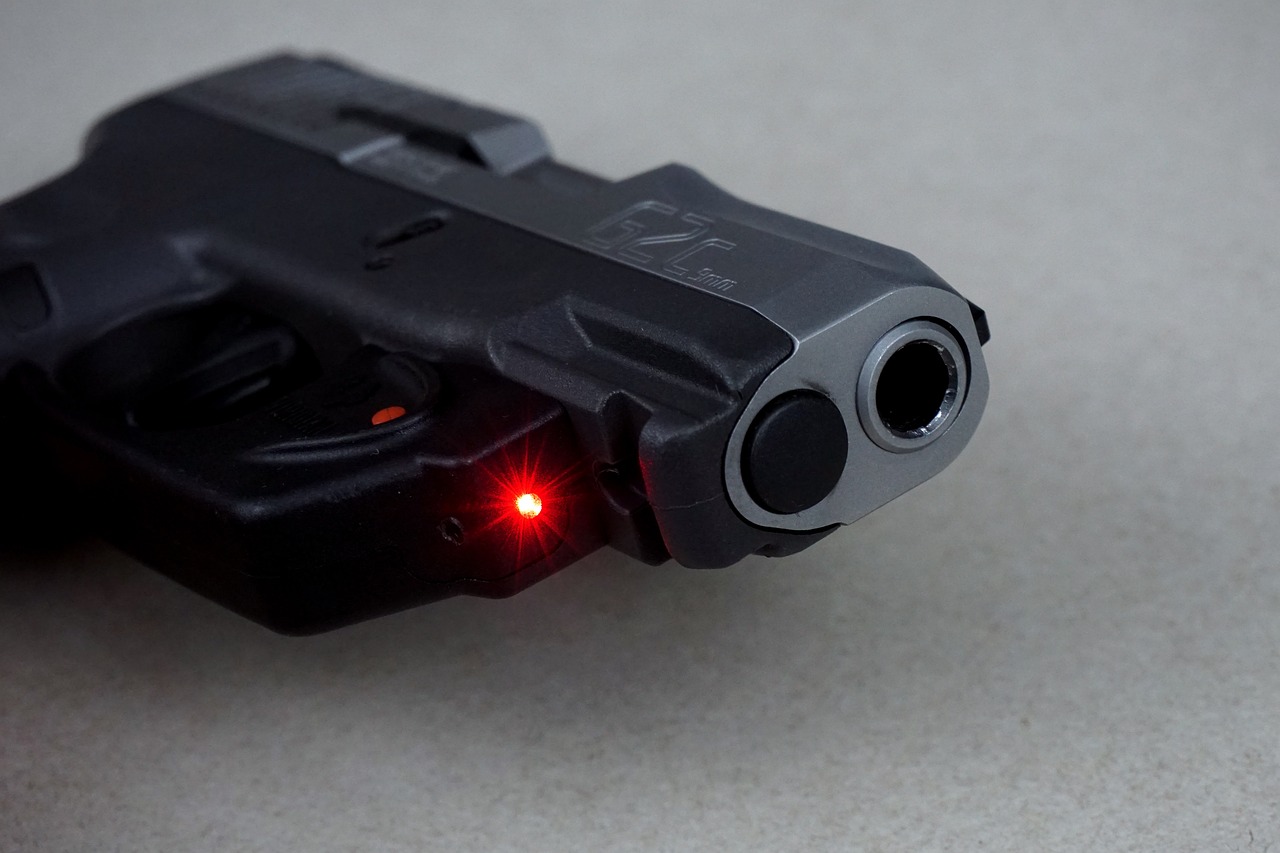
The Importance of Mental Preparedness
Mental preparedness is often the unsung hero in the realm of self-defense training. While physical techniques and skills are undeniably crucial, the mind plays a pivotal role in how effectively those skills are executed under pressure. Imagine being in a high-stress situation where your instincts kick in. If you're not mentally prepared, even the best techniques can fall flat. So, what does it mean to be mentally prepared? It involves a combination of situational awareness, threat assessment, and the ability to maintain composure when the heat is on.
Situational awareness is like having a sixth sense. It’s about being aware of your surroundings and recognizing potential threats before they escalate. This skill can be developed through various exercises, such as role-playing scenarios or simply practicing mindfulness in everyday life. By honing this ability, you can avoid dangerous situations altogether or at least be ready to respond effectively if they arise. Think of it as having a mental radar that helps you navigate through life safely.
Next comes threat assessment. This is where you evaluate the potential risks in a given situation. Not every confrontation requires a physical response. Sometimes, the best defense is to avoid the situation entirely or de-escalate it verbally. When you're mentally prepared, you can quickly assess whether a threat is real or perceived, allowing you to make informed decisions. For instance, if someone approaches you aggressively, your training will help you determine whether to engage, retreat, or negotiate.
Finally, maintaining composure under pressure is essential. It's easy to say, "Stay calm!" but when adrenaline kicks in, that’s often easier said than done. Techniques such as deep breathing, visualization, and positive affirmations can help you build this mental resilience. Picture yourself successfully navigating a confrontation, or remind yourself of your training and capabilities. These mental strategies can significantly enhance your performance when it counts the most.
To summarize, being mentally prepared for self-defense involves:
- Developing situational awareness to recognize threats early.
- Assessing situations to determine the best course of action.
- Practicing techniques to maintain composure during high-stress scenarios.
By focusing on mental preparedness, you're not just training your body; you're training your mind to react appropriately in challenging situations. This holistic approach to self-defense will not only make you more effective but also instill a deep sense of confidence in your abilities. Remember, self-defense is as much about mental fortitude as it is about physical prowess.
Q: Why is mental preparedness important in self-defense?
A: Mental preparedness helps you assess situations, recognize threats, and maintain composure, which is crucial for effectively applying physical techniques.
Q: How can I improve my situational awareness?
A: You can improve situational awareness through mindfulness practices, role-playing scenarios, and by regularly evaluating your environment.
Q: What techniques can help me stay calm under pressure?
A: Techniques such as deep breathing, visualization, and positive affirmations can help manage stress and keep you focused during confrontations.
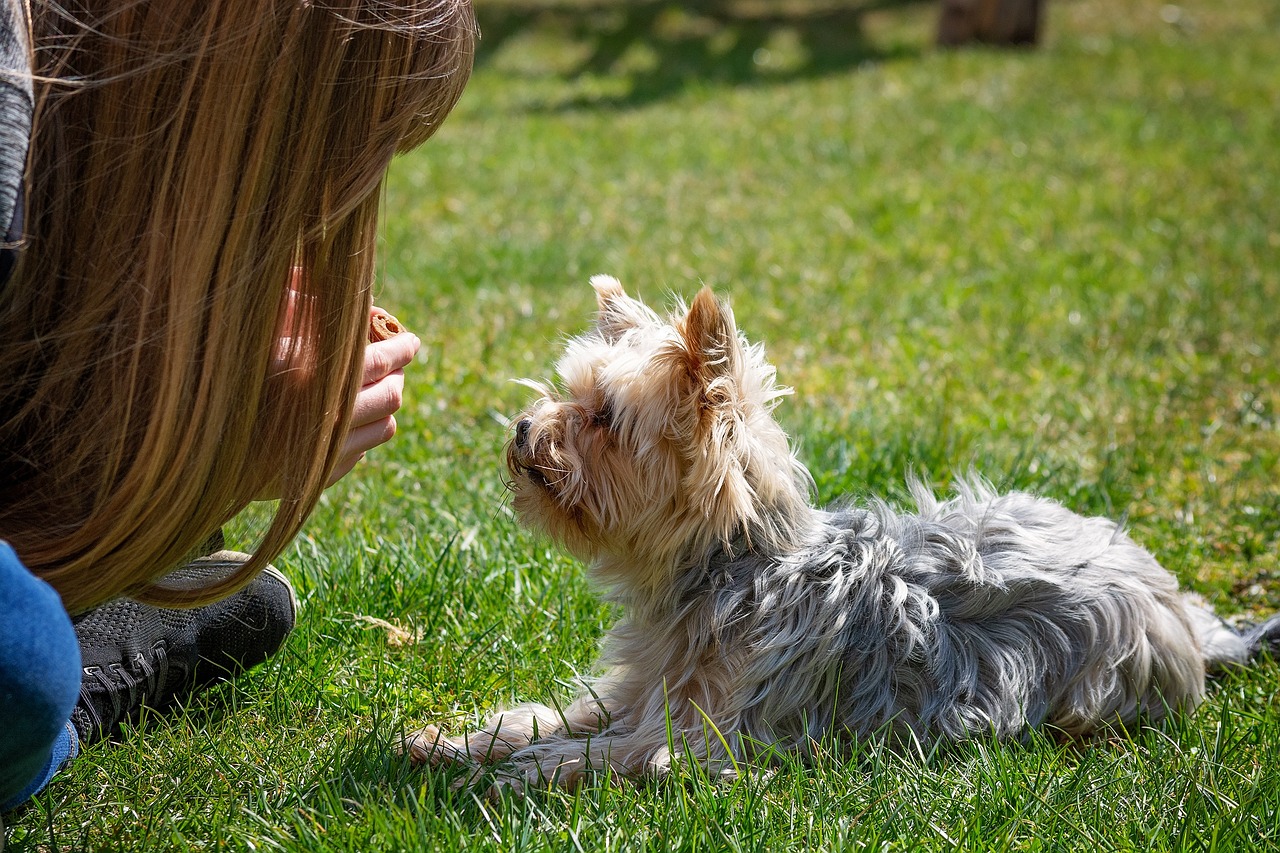
Building Confidence
Building confidence in self-defense is not just about mastering techniques; it’s a holistic journey that intertwines physical skills with mental fortitude. Imagine standing in front of a mirror, practicing your stance, and realizing that the person looking back is not just you, but a stronger, more empowered version of yourself. Confidence in self-defense training can be likened to planting a seed—nurturing it with practice, positive affirmations, and visualization will help it grow into a robust tree that can withstand the storms of real-life confrontations.
One of the most effective ways to build confidence is through visualization techniques. Picture yourself in a challenging scenario, successfully using the techniques you've learned. This mental rehearsal helps your brain create neural pathways that make executing those techniques in real life feel more instinctive. Alongside visualization, incorporating positive affirmations into your training routine can significantly boost your self-esteem. Simple phrases like "I am capable" or "I can protect myself" can reinforce your belief in your abilities. Consider writing these affirmations on sticky notes and placing them around your training space to keep your mindset focused and positive.
Moreover, confidence is often built in a supportive environment where you feel safe to explore your limits. Engaging with fellow trainees who share similar goals can create a network of encouragement. This camaraderie allows you to share experiences, celebrate victories, and learn from each other’s challenges. Remember, every expert was once a beginner, and sharing your journey with others can make the process less daunting.
In addition to mental strategies, practical experience plays a crucial role in building confidence. Regular practice sessions, especially with a partner, allow you to apply what you've learned in a controlled setting. This not only reinforces your skills but also helps desensitize you to the stress of real-life confrontations. The more you practice, the more your body learns to respond effectively, and this muscle memory translates into confidence. Consider setting up mock scenarios where you can practice your techniques in a realistic but safe environment.
Ultimately, building confidence in self-defense is about embracing the journey. It’s about acknowledging your progress, no matter how small, and celebrating the fact that you are taking proactive steps to empower yourself. So, lace up those training shoes, step onto the mat, and remember: each class is an opportunity to grow stronger, both physically and mentally.
- How long does it take to build confidence in self-defense? Confidence varies from person to person, but consistent practice and positive reinforcement can lead to noticeable improvements within a few months.
- Can I practice self-defense techniques at home? Absolutely! Many techniques can be practiced alone or with a partner at home, but always ensure you prioritize safety.
- What if I feel nervous during training? Feeling nervous is completely normal! Focus on your breathing, remind yourself of your progress, and communicate with your instructor or peers for support.

Stress Management Techniques
When it comes to self-defense training, maintaining your composure is just as crucial as mastering physical techniques. Stress management techniques can significantly enhance your ability to react effectively in high-pressure situations. Think of it like preparing for a big game; you wouldn't step onto the field without a strategy, right? The same goes for self-defense. Here are some techniques that can help you stay calm and focused:
1. Deep Breathing: One of the simplest yet most effective techniques is deep breathing. When you feel stressed, your body goes into fight-or-flight mode, which can cloud your judgment. By taking a few deep breaths, you can lower your heart rate and regain control. Inhale deeply through your nose, hold for a few seconds, and then exhale slowly through your mouth. This practice helps to center your thoughts and prepare you for action.
2. Visualization: Imagine yourself successfully defending against an attacker. Visualization can be a powerful tool in building confidence and reducing anxiety. Picture yourself using the techniques you've learned, and visualize the scenario playing out positively. This mental rehearsal not only boosts your self-assurance but also helps to condition your mind for real-life situations.
3. Positive Affirmations: Using positive affirmations can reinforce your belief in your abilities. Phrases like "I am strong," "I am capable," and "I can handle this" can shift your mindset from one of fear to one of empowerment. Repeat these affirmations regularly, especially before training sessions, to cultivate a more confident and resilient attitude.
4. Mindfulness and Meditation: Incorporating mindfulness and meditation into your routine can help you develop a greater awareness of your thoughts and emotions. By practicing mindfulness, you can learn to observe stress without letting it overwhelm you. Even spending just a few minutes each day in meditation can significantly improve your focus and emotional regulation.
Remember, stress management is not just about reducing anxiety; it’s about enhancing your overall performance in self-defense training. The more you practice these techniques, the more natural they will become, allowing you to respond to challenges with clarity and confidence.
Q: How can I incorporate stress management techniques into my self-defense training?
A: You can practice deep breathing before and during training sessions, use visualization techniques to mentally prepare for scenarios, and repeat positive affirmations to boost your confidence.
Q: Can mindfulness really help in high-pressure situations?
A: Yes! Mindfulness helps you stay present and focused, allowing you to respond more effectively when faced with unexpected challenges.
Q: How often should I practice these stress management techniques?
A: Regular practice is key. Aim for daily sessions of deep breathing, visualization, and mindfulness, even if it's just for a few minutes.

Practicing Regularly
When it comes to mastering self-defense, consistency is key. Just like learning a musical instrument or a new language, regular practice is essential to reinforce your skills and build muscle memory. Imagine trying to play a song on the piano after only practicing once a month—it's not going to sound great! The same principle applies to self-defense. To ensure that you are prepared for any situation, you need to make training a regular part of your routine.
One of the best ways to stay on track is by setting a training schedule that fits seamlessly into your life. Think about your weekly commitments and carve out specific times dedicated to self-defense practice. This could be a couple of evenings a week or even weekends. The important thing is to treat these sessions like important appointments that you cannot miss. By doing this, you’ll find that you not only improve your skills but also build a habit that will serve you in times of need.
Finding a training partner can also significantly enhance your practice sessions. Training with someone else can provide motivation, accountability, and the opportunity to simulate realistic scenarios. You can take turns practicing techniques, which allows both of you to learn from each other’s strengths and weaknesses. Plus, it can be a lot more fun! Here are some benefits of training with a partner:
- Realistic Practice: You can mimic real-life situations more effectively.
- Feedback: Partners can provide constructive criticism to help you improve.
- Motivation: It's easier to stay committed when someone else is counting on you.
However, it’s also crucial to remember that quality trumps quantity. It's better to have a focused, intense session than to go through the motions in a longer practice. Make sure that you are fully engaged during your training time, paying attention to your technique and form. Consider incorporating drills that challenge you and push your limits, but also allow for rest and recovery to avoid burnout.
Lastly, don’t forget to track your progress. Keeping a log of what you practice can help you identify areas for improvement and celebrate your successes. Whether it's mastering a new technique or simply feeling more confident, acknowledging your growth will keep you motivated and excited about your self-defense journey.
Q: How often should I practice self-defense techniques?
A: Aim for at least two to three times a week, but even short daily sessions can be beneficial.
Q: Can I practice self-defense techniques at home?
A: Absolutely! Many techniques can be practiced solo, such as footwork and shadow fighting. Just ensure you have enough space to move safely.
Q: What if I can’t find a training partner?
A: You can practice techniques alone or join online classes and forums to connect with others who are also learning.
Q: How do I stay motivated to practice regularly?
A: Set specific goals, track your progress, and remind yourself of the reasons you started training in the first place.

Setting a Training Schedule
Creating a training schedule for your self-defense practice is crucial for ensuring consistent progress and skill retention. Think of it as laying down the tracks for a train; without a solid foundation, you might find yourself derailed. First, consider your current commitments and how much time you can realistically dedicate to training each week. It’s essential to strike a balance between your self-defense training and other responsibilities, such as work, family, and social life. A well-structured schedule not only helps you stay committed but also keeps your motivation high.
When designing your training schedule, aim for a mix of different types of practice sessions. For instance, you might include:
- Technique practice: Focus on specific skills and drills.
- Conditioning sessions: Build your physical fitness, which is vital for effective self-defense.
- Sparring or partner drills: Apply what you've learned in a controlled environment.
Consider using a simple weekly planner or a digital calendar to block out time for each type of training. This visual representation can help you stay organized and motivated. For example, you might set aside time on Monday and Wednesday evenings for technique practice, while reserving Saturday mornings for conditioning and sparring with a partner. Remember, consistency is key! Even if you can only dedicate a few hours a week, regular practice will yield better results than sporadic, intense sessions.
Additionally, don't forget to incorporate rest days into your schedule. Just like any athlete, your body needs time to recover to prevent injuries and allow your muscles to rebuild stronger. You might choose to have lighter training sessions or focus on flexibility and recovery techniques, such as yoga or stretching, on those days.
Lastly, be flexible with your schedule. Life can throw unexpected challenges your way, and it’s okay to adjust your training plan as needed. The goal is to create a sustainable routine that fits your lifestyle while still pushing you toward your self-defense goals. Remember, self-defense training is a journey, not a sprint. Embrace the process, and you’ll find yourself growing more skilled and confident over time.
Q: How often should I train for self-defense?
A: Ideally, aim for at least 2-3 times a week, incorporating a mix of techniques, conditioning, and sparring. Consistency is more important than intensity.
Q: Can I train self-defense alone?
A: While some techniques can be practiced solo, training with a partner is highly beneficial for realistic practice and feedback.
Q: What should I wear to self-defense classes?
A: Comfortable athletic wear is recommended, along with any required protective gear, such as gloves or mouthguards, depending on the class.
Q: How do I know if I'm making progress?
A: Keep track of your skills and improvements by setting specific goals, such as mastering a technique or increasing your stamina. Regular feedback from instructors can also help gauge your progress.
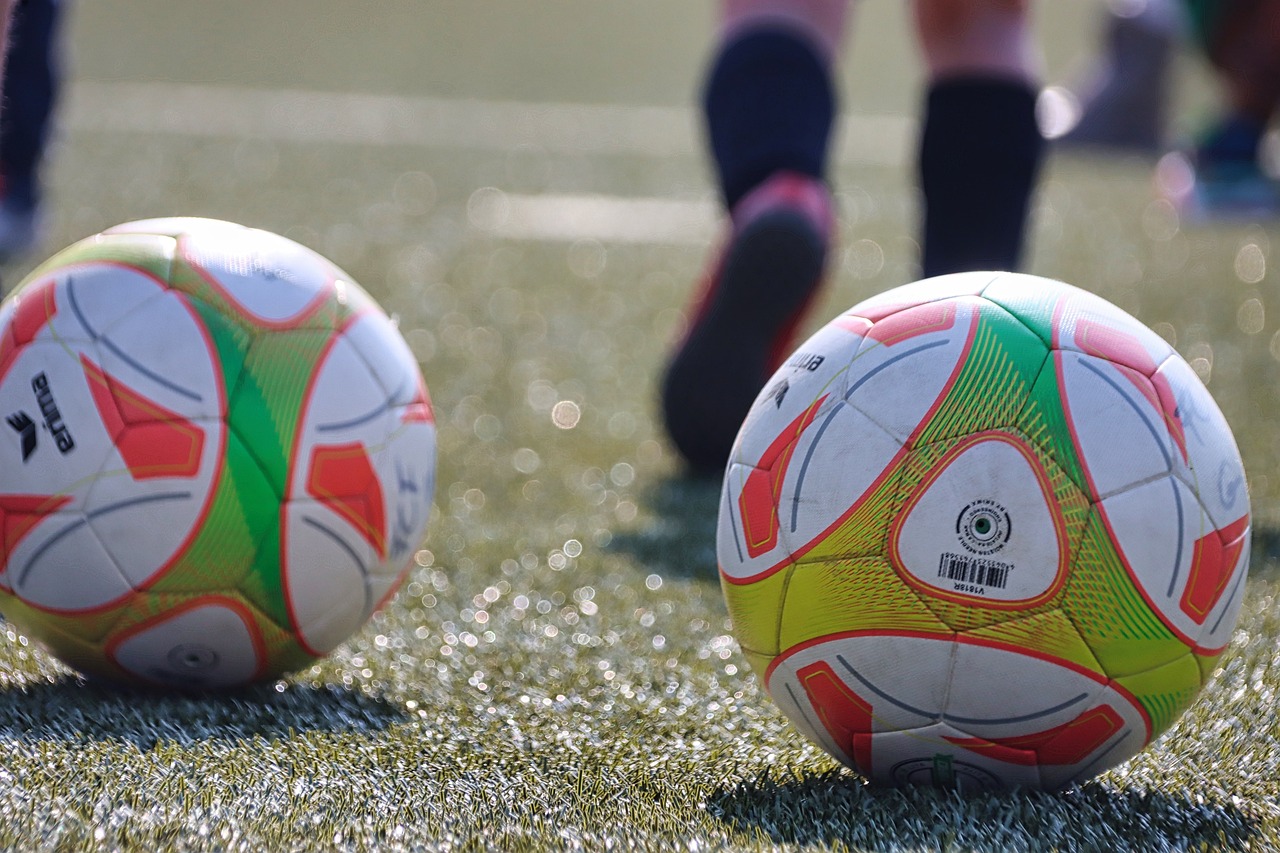
Finding a Training Partner
When it comes to self-defense training, having a reliable training partner can make all the difference in your learning experience. Think about it: would you rather practice those critical techniques alone, or have someone there to challenge you, motivate you, and help you grow? A training partner not only provides a sense of accountability but also allows you to simulate real-life scenarios, making your practice sessions more effective and realistic.
Finding the right training partner is like searching for a gym buddy; you want someone who shares your enthusiasm and commitment. It's essential to look for someone who is at a similar skill level as you, so you can both learn and improve together. This way, you can push each other to new heights without feeling overwhelmed or under-challenged. If you're just starting, consider reaching out to classmates from your self-defense class or even friends who have an interest in learning self-defense techniques.
Here are some key points to keep in mind when selecting a training partner:
- Shared Goals: Ensure that both of you have similar objectives for your training. Whether it's gaining confidence, improving fitness, or mastering techniques, having aligned goals can enhance your training sessions.
- Communication: A good training partner should be open to discussing techniques and providing constructive feedback. This communication is vital for mutual growth and understanding.
- Safety First: Always prioritize safety during practice. Make sure your partner is willing to respect boundaries and practice with control to minimize the risk of injury.
Moreover, training with a partner can introduce an element of fun and camaraderie to your sessions. You can exchange tips, share your progress, and even engage in friendly competitions to keep the energy high. Just imagine the thrill of executing a perfect escape technique or landing a solid strike, all while celebrating each other’s victories! This shared journey can transform what might feel like a daunting task into an enjoyable experience.
In conclusion, finding a training partner is not just about improving your skills; it's about building a supportive community around your self-defense journey. So, reach out, connect, and start practicing together. You'll not only enhance your abilities but also create lasting friendships along the way!

Staying Safe During Training
When it comes to self-defense training, safety should be your top priority. Imagine stepping onto the mat, adrenaline pumping, but instead of focusing solely on your techniques, you're also worrying about potential injuries. To truly benefit from your training, you need to create an environment where you can learn and practice without the fear of getting hurt. This means understanding not only the techniques but also the importance of safety measures.
One of the first steps in ensuring safety is the use of protective gear. Just like a football player wouldn’t step onto the field without a helmet, you shouldn’t enter a self-defense class without the right equipment. Protective gear such as gloves, mouthguards, and shin guards can significantly reduce the risk of injury during sparring or practice. It’s essential to invest in quality gear that fits well, as poorly fitting equipment can do more harm than good.
Additionally, it’s crucial to practice with control. This doesn’t mean you should hold back completely; rather, you should aim to strike a balance between practicing techniques effectively and being mindful of your partner’s safety. For instance, when practicing striking techniques, ensure that you’re aware of your power levels. Overextending or using excessive force can lead to accidents, so always communicate with your training partner about what feels comfortable for both of you.
Another vital aspect of safety is listening to your body. During training, you might feel a bit sore or fatigued, and that’s perfectly normal. However, if you start to feel pain or discomfort that doesn’t feel right, it’s important to take a step back. Ignoring your body’s signals can lead to serious injuries that could sideline you for weeks or even months. Remember, self-defense training is a marathon, not a sprint. Taking care of yourself will ensure you can continue to train effectively in the long run.
Lastly, fostering a supportive training environment can enhance safety for everyone involved. Whether you’re in a small class or a large group, the atmosphere should encourage communication and respect among participants. If you ever feel uncomfortable with a technique or a partner, don’t hesitate to speak up. A good instructor will promote an environment where everyone feels safe to express their needs and concerns.
In summary, staying safe during self-defense training is all about being proactive. By using protective gear, practicing with control, listening to your body, and fostering a supportive environment, you can maximize your learning experience while minimizing the risk of injury. So, gear up, stay alert, and enjoy your journey into the world of self-defense!
- What type of protective gear should I use? It's recommended to use gloves, mouthguards, and shin guards to minimize injuries.
- How can I practice safely with a partner? Always communicate with your partner about comfort levels and practice techniques with control.
- What should I do if I feel pain during training? If you experience pain that feels unusual, stop training and consult with a professional if necessary.
- Is it normal to feel sore after training? Yes, some soreness is normal, but listen to your body and rest if you feel excessive discomfort.

Using Protective Gear
When it comes to self-defense training, one of the most crucial aspects that often gets overlooked is the use of protective gear. Just like a knight wouldn't head into battle without their armor, you shouldn't step onto the training floor without the right equipment. Wearing protective gear not only helps to prevent injuries but also allows you to train more effectively, knowing that you’re safeguarded against unexpected impacts. Imagine trying to learn how to ride a bike without a helmet—it's just not safe and could lead to severe consequences.
In self-defense training, the types of protective gear you should consider include:
- Gloves: These are essential to protect your hands and your training partner from cuts and bruises during striking practice.
- Mouthguards: A must-have to protect your teeth and jaw, especially during sparring sessions.
- Shin Guards: These help to absorb the shock from kicks and prevent injuries to your shins.
- Headgear: Wearing headgear can prevent concussions and other serious head injuries when practicing full-contact techniques.
It's important to invest in high-quality protective gear that fits well and is comfortable. Poorly fitting gear can be distracting and may even lead to injuries instead of preventing them. Before you purchase your gear, consider trying it on and ensuring that it allows for a full range of motion. Just like a well-fitted shoe can make all the difference in a marathon, the right protective equipment can enhance your training experience significantly.
Additionally, remember that safety is a two-way street. While wearing protective gear, it's essential to practice control and respect with your training partners. Always communicate openly about your comfort levels and the intensity of the training sessions. This not only fosters a safer environment but also builds trust and camaraderie among participants.
Lastly, don’t forget to regularly check your gear for wear and tear. Just like you wouldn’t wear a helmet that’s cracked or a seatbelt that’s frayed, using damaged protective gear can be risky. Replace any worn-out items promptly to ensure that your training remains as safe and effective as possible.
Q: Why is protective gear important in self-defense training?
A: Protective gear is essential to prevent injuries to both yourself and your training partners, allowing for a safer and more effective training experience.
Q: What types of protective gear should I invest in?
A: Key items include gloves, mouthguards, shin guards, and headgear, each serving a specific purpose in safeguarding against injuries during training.
Q: How do I know if my protective gear fits properly?
A: Your gear should fit snugly but not restrict movement. Try it on and ensure you can perform techniques comfortably without any discomfort.
Q: How often should I replace my protective gear?
A: Regularly inspect your gear for signs of wear and tear. Replace any damaged items immediately to maintain safety during training.
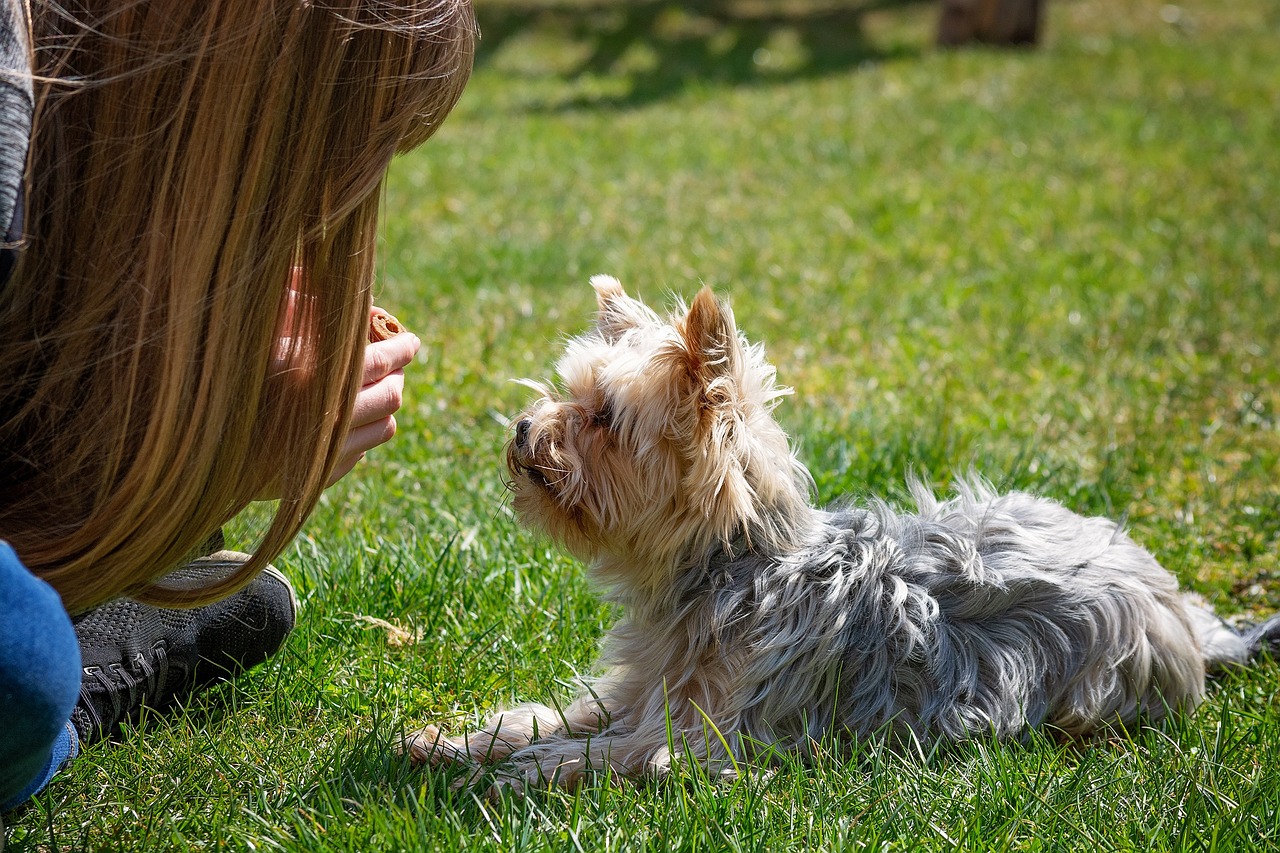
Listening to Your Body
When diving into the world of self-defense training, one of the most crucial lessons you'll learn is the importance of . Your body is like a finely tuned instrument, and just like a musician must pay attention to the notes they play, you must be attuned to the signals your body sends you. Ignoring these signals can lead to injuries, burnout, and even a lack of motivation to continue your training journey.
First and foremost, it's essential to recognize the signs of fatigue. If you find yourself feeling unusually tired or sore, it might be time to take a step back. Pushing through pain can lead to serious injuries that could sideline your training for weeks or even months. Instead, consider incorporating rest days into your routine. These days are not a sign of weakness but rather a vital part of the training process that allows your muscles to recover and grow stronger.
Moreover, hydration plays a pivotal role in how your body performs during training. When you're dehydrated, your body can't function at its best, leading to decreased performance and an increased risk of injury. Make it a habit to drink water before, during, and after your training sessions. This simple act can make a world of difference in how you feel and perform.
Another aspect to consider is the importance of warming up and cooling down. Skipping these steps can lead to muscle strains and injuries. A proper warm-up prepares your body for the physical demands of training, while a cool-down helps your body transition back to a resting state. Incorporate dynamic stretches in your warm-up and static stretches in your cool-down routine to keep your muscles flexible and healthy.
Additionally, it's beneficial to keep an open line of communication with your instructor and training partners. If you're feeling discomfort or struggling with a particular technique, don't hesitate to speak up. Training should be a supportive environment, and your instructors can offer modifications or alternative techniques that suit your current physical state.
In summary, listening to your body is not just about avoiding injuries; it's about enhancing your overall training experience. By acknowledging your physical limits, staying hydrated, warming up and cooling down, and communicating openly, you can create a sustainable training routine that keeps you engaged and motivated. Remember, self-defense is not just about the techniques; it's also about understanding and respecting your own body. So, take a moment to check in with yourself, and let your body guide you on your self-defense journey.
- How can I tell if I'm overtraining? Look for signs such as persistent fatigue, decreased performance, and increased irritability. If you notice these symptoms, consider taking a break or reducing your training intensity.
- What should I do if I feel pain during training? Stop immediately and assess the situation. If the pain persists, consult a medical professional before returning to training.
- How often should I rest during my training? It's generally recommended to take at least one to two rest days per week, depending on the intensity of your training.
- What are some good hydration tips for training? Aim to drink water regularly throughout the day, not just during training. Consider carrying a water bottle with you to remind yourself to hydrate.
Frequently Asked Questions
- What should I wear to self-defense training?
It's best to wear comfortable athletic clothing that allows for a full range of motion. Consider wearing shoes that provide good grip but are not too bulky, like training shoes or martial arts footwear. Also, avoid wearing jewelry that could get caught during practice.
- How long does it take to become proficient in self-defense?
The timeline varies for each individual, but with consistent practice, you can start feeling more confident in your skills within a few months. Remember, self-defense is not just about physical techniques; it’s also about mental preparedness and situational awareness, which develop over time.
- Can I practice self-defense techniques at home?
Absolutely! Practicing at home can reinforce what you've learned in class. Just make sure you have enough space and practice safely. You can work on striking techniques, footwork, and even visualization exercises to enhance your mental preparedness.
- Is self-defense training suitable for everyone?
Yes, self-defense training is designed for individuals of all ages and fitness levels. Whether you're looking to build confidence, improve your fitness, or learn practical skills, there’s a program that can meet your needs. Always consult with your instructor about any specific concerns.
- How often should I train to see improvements?
Consistency is key! Aim for at least two to three sessions per week. This frequency will help reinforce your skills, improve muscle memory, and build confidence. Even short practice sessions at home can be beneficial!
- What if I feel nervous or intimidated in class?
Feeling nervous is completely normal, especially when starting something new. Remember, everyone in the class is there to learn, just like you! Communicate with your instructor about your feelings; they can provide support and help create a comfortable learning environment.
- Are there any age restrictions for self-defense classes?
Most self-defense programs welcome participants of all ages, but it’s essential to check with the specific program for any age restrictions. Some classes may be tailored for children, while others are designed for adults or mixed age groups.
- What types of self-defense techniques will I learn?
You’ll typically learn a variety of techniques, including striking, blocking, and escaping maneuvers. Many programs also focus on situational awareness and de-escalation strategies, which are crucial for avoiding confrontations altogether.

